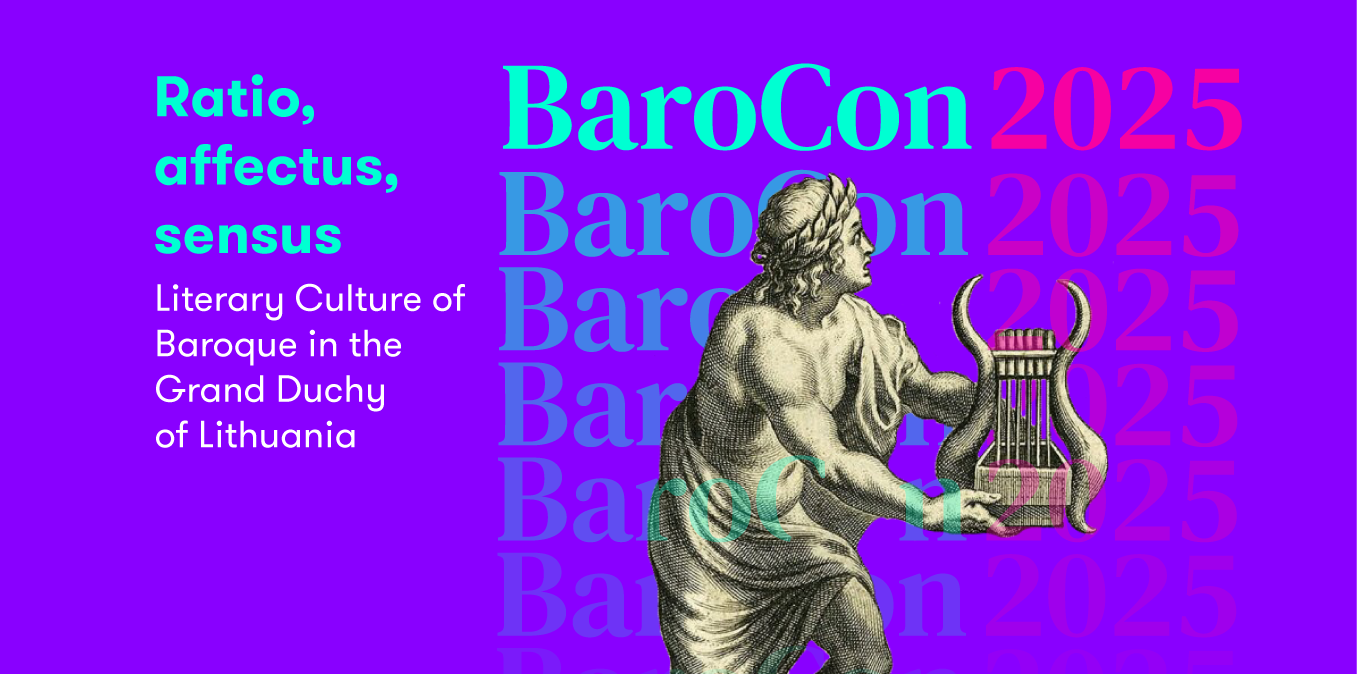Ratio, affectus, sensus: Literary Culture of the Baroque in the Grand Duchy of Lithuania
In 2025, we will commemorate the 400th anniversary of the first publication of Matheus Casimirus Sarbievius' most famous Latin poetry collection 'Lyricorum libri tres' (1625). This has led to 2025 being declared the Year of Baroque Literature in Lithuania. The eminent Jesuit neo-Latin poet of the Polish-Lithuanian Commonwealth, Sarbievius, has been hailed as the Christian Horace and the Sarmatian Horace. His theoretical thoughts on poetry and rhetoric are still highly regarded and have inspired new research on other concurrent themes and authors. This anniversary provides an opportunity to explore the extent and diversity of Baroque literary culture, which has seen a surge of interest in recent decades, both in the academic world and in popular culture. Therefore, the Institute of Lithuanian Literature and Folklore, together with the Faculty of Philology of Vilnius University, is organising an international academic conference "Ratio, affectus, sensus: Literary Culture of the Baroque in the Grand Duchy of Lithuania" on 25-27 September 2025 in the baroque city of Vilnius.
The aim of the multidisciplinary conference is to stimulate discussion on the literary culture of the "long seventeenth century" (from the end of the 16th century to the middle of the 18th century) in the Grand Duchy of Lithuania. This historical period, associated with dramatic changes and a general cultural crisis, is often described in contradictory terms and in constant tension between reason and senses, rigid structure and passions, classifications and impressions, etc. By embracing this contradiction, we invite an exploration of the theme in question through the lens of this dynamic interplay between reason (ratio), emotion (affectus) and the senses (sensus), which can be perceived in various genres of the period, such as poetry, biography, hagiography, rhetoric, private and public correspondence, and so on. The importance of the modern approach lies not only in what it can reveal about the Baroque in the Grand Duchy of Lithuania, but also about subsequent and contemporary literary culture, as scholars have demonstrated the continuing influence of a 'Baroque spirit'.
Event location
25–26 September the conference will take place at V. Krėvė (118) auditorium, Faculty of Philology
27 September the conference will take place at the Church Heritage Museum, Šv. Mykolo g. 9 (entrance from Maironio g. "Arkangelo konferencijų centras")
Keynote speakers

Ona Dilytė-Čiurinskienė
Senior Researcher, The Institute of Lithuanian Literature and Folklore
Prof Stephen Harrison
Professor of Latin literature, University of Oxford
Marc Laureys
‘Parodia’ in the Lyrical Poetry of Albertus Ines SJ
Marc Laureys
'Parodia' in the Lyrical Poetry of Albertus Ines SJ
Recent scholarship has shown that the literary practice of 'parodia' was far more wide-spread and much more variegated than previously assumed. To date, investigations have focussed too exclusively on the large collections of 'parodiae' that were produced in the late sixteenth and early seventeenth centuries, predominantly in Northern Germany and Silesia, by Protestant authors. The Neo-Latin tradition of 'parodia', however, started much earlier and developed in Catholic areas as well. More case studies are needed to better understand the nature and extent of this peculiar phenomenon in Neo-Latin literature. In this paper, I propose to analyze the ‘parodical’ practice in the lyrical poetry of Albertus Ines (1619-1658). Along with Andreas Kanon (1612-1685), Ines is the most important Neo-Latin poet from the Polish–Lithuanian Commonwealth who followed in the footsteps of Matheus Casimirus Sarbievius. Even so, Ines not only wrote, as a self-proclaimed "vates Marianus", lyrical poetry in the manner of Sarbievius, but also seven "centuriae" of epigrams, which earned him the title of "Martialis Sarmaticus". Just like Ines’s Neo-Latin poetry in general, his handling of 'parodia', too, is marked by tradition and innovation. In his "Lyrica", a number of conventional 'parodiae Horatianae' can be found, whereas Ines breaks new ground with his "Horologium Marianum", a set of seven 'parodiae' in Sapphic stanzas of the rhythmic poems that are part of the "Officium Parvum Conceptionis Immaculatae Beatae Virginis Mariae", which harks back to the end of the fifteenth century. In my paper, I intend to analyze Ines’s ‘parodical’ technique in the double context of the history of Neo-Latin 'parodia' and Sarbievius’s influence on Ines’s poetry.


